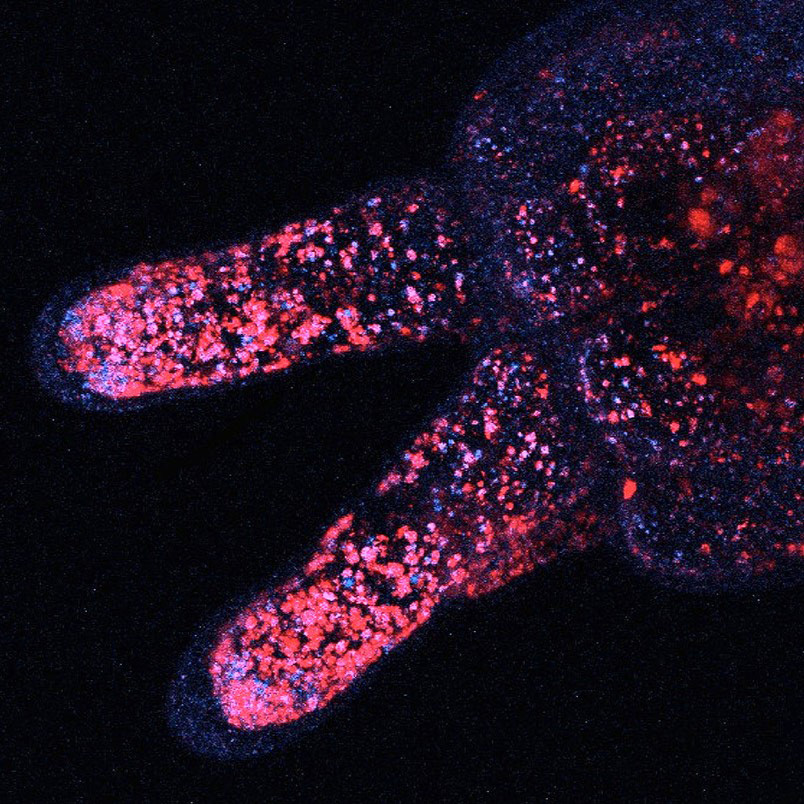 The Whitney Laboratory for Marine Bioscience
The Whitney Laboratory for Marine Bioscience

Reefs are vibrant, living structures laid down over time by tiny tentacled animals. But how exactly corals construct the crystals that become the reefs’ craggy rocks—a process known as biomineralization—has long been a mystery.
Now, researchers have finally made a breakthrough.
Whitney Laboratory Martindale Lab biomineralization work was recently covered in the Science article:
By adding genes to a nonmineralizing relative that’s better suited to lab life, team aims to show how corals build reefs
In June, University of Florida (UF) marine biologist Federica Scucchia believed she and her colleagues had finally made a breakthrough. Peering through a microscope at blue and red blobs along the tentacle of a 0.6-millimeter anemone, a soft-bodied coral relative, Scucchia saw signs that the team had managed to coax the creature to produce a coral protein that concentrates reef-building calcium. “I was like, ‘Wow! This cannot be!’” she recalls.
The finding, reported on 5 October in a bioRxiv preprint, has excited coral researchers. Anemones are far easier to manipulate in the lab than corals, which could enable researchers to dissect the workings of biomineralization. That could improve their ability to predict how climate change will affect critical reef ecosystems.
Read the full article here:
‘Why can’t you make a coral out of an anemone?’
Image - A genetically engineered anemone produces a coral protein (red) that is concentrating calcium (blue). FEDERICA SCUCCHIA